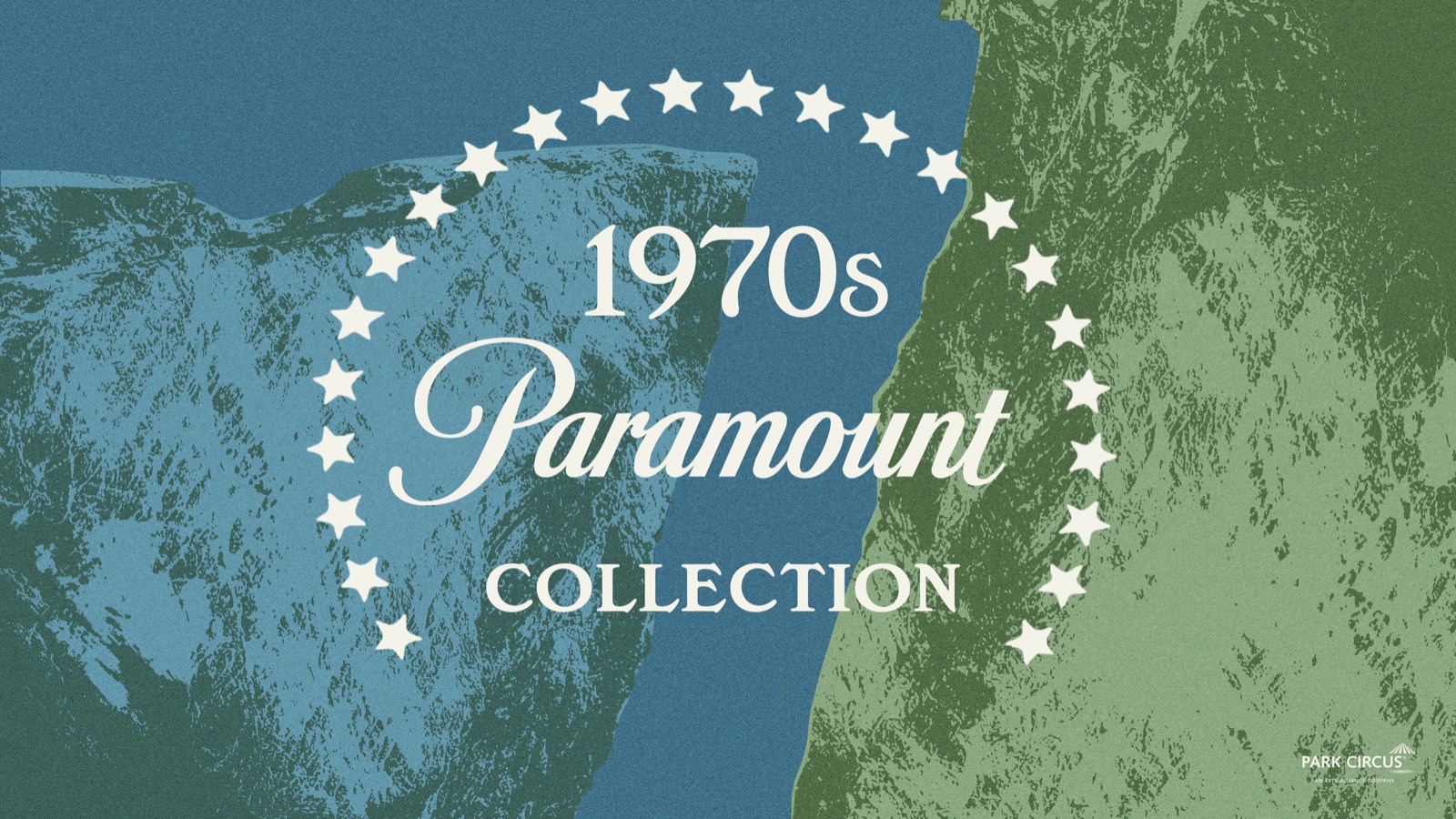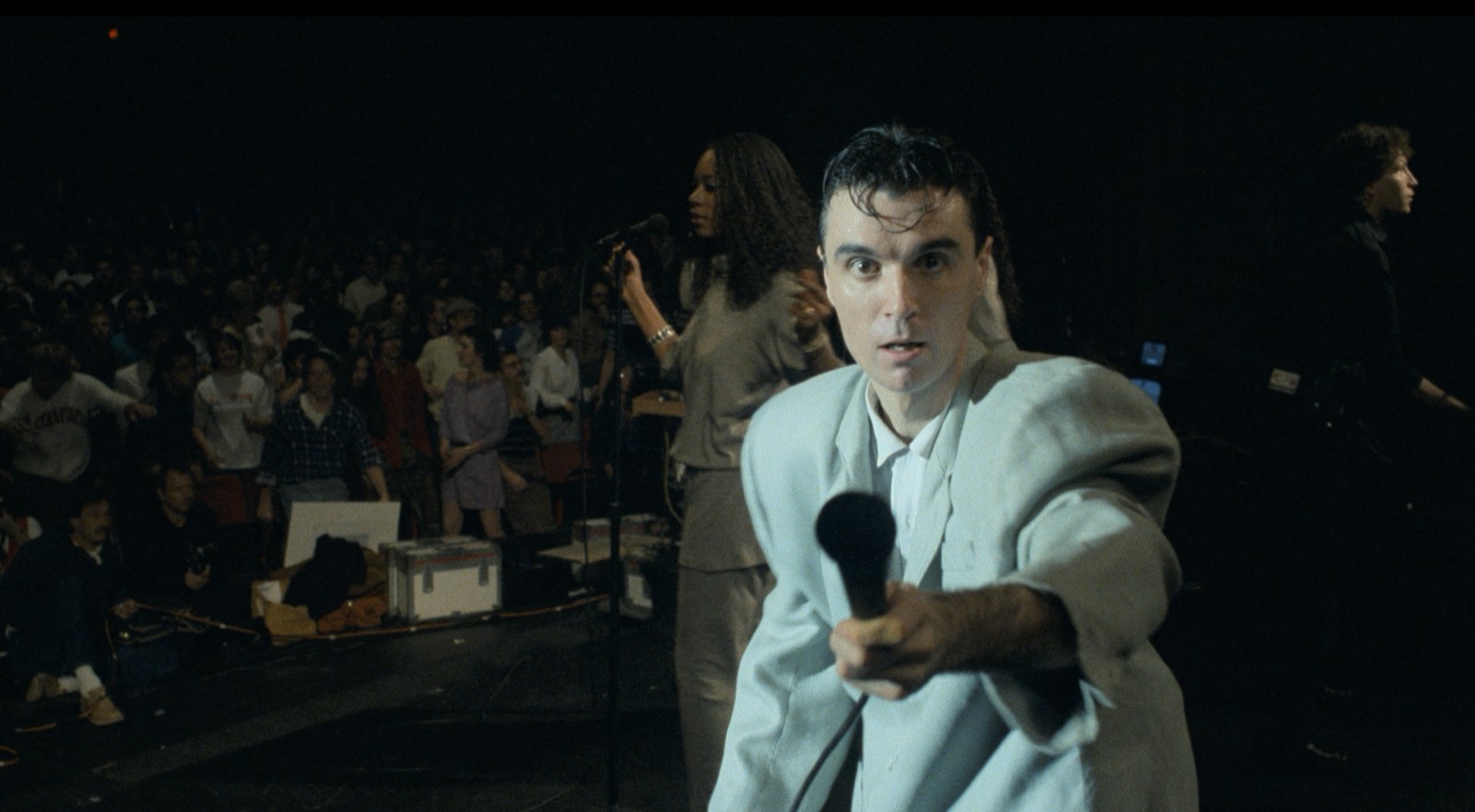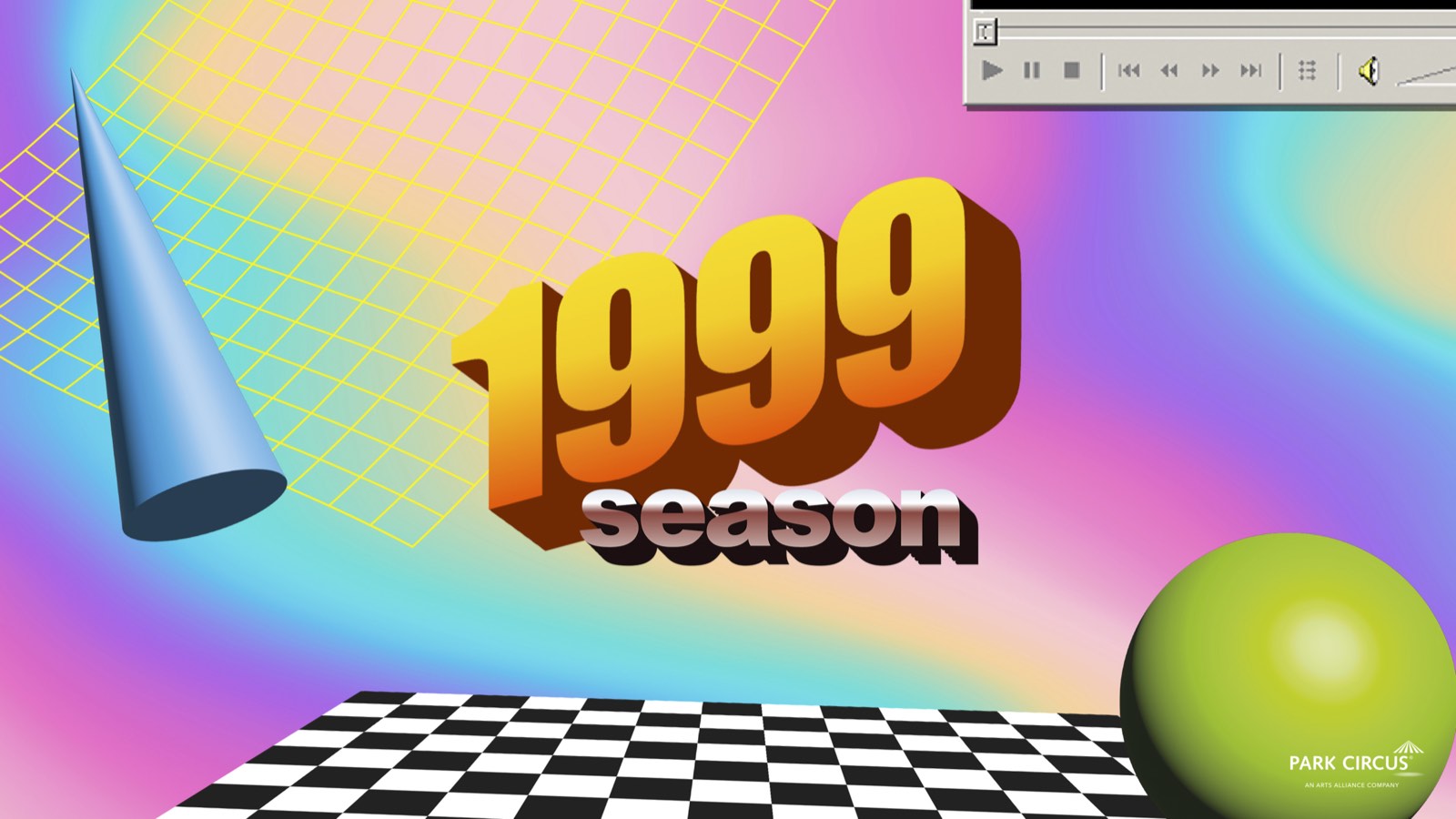
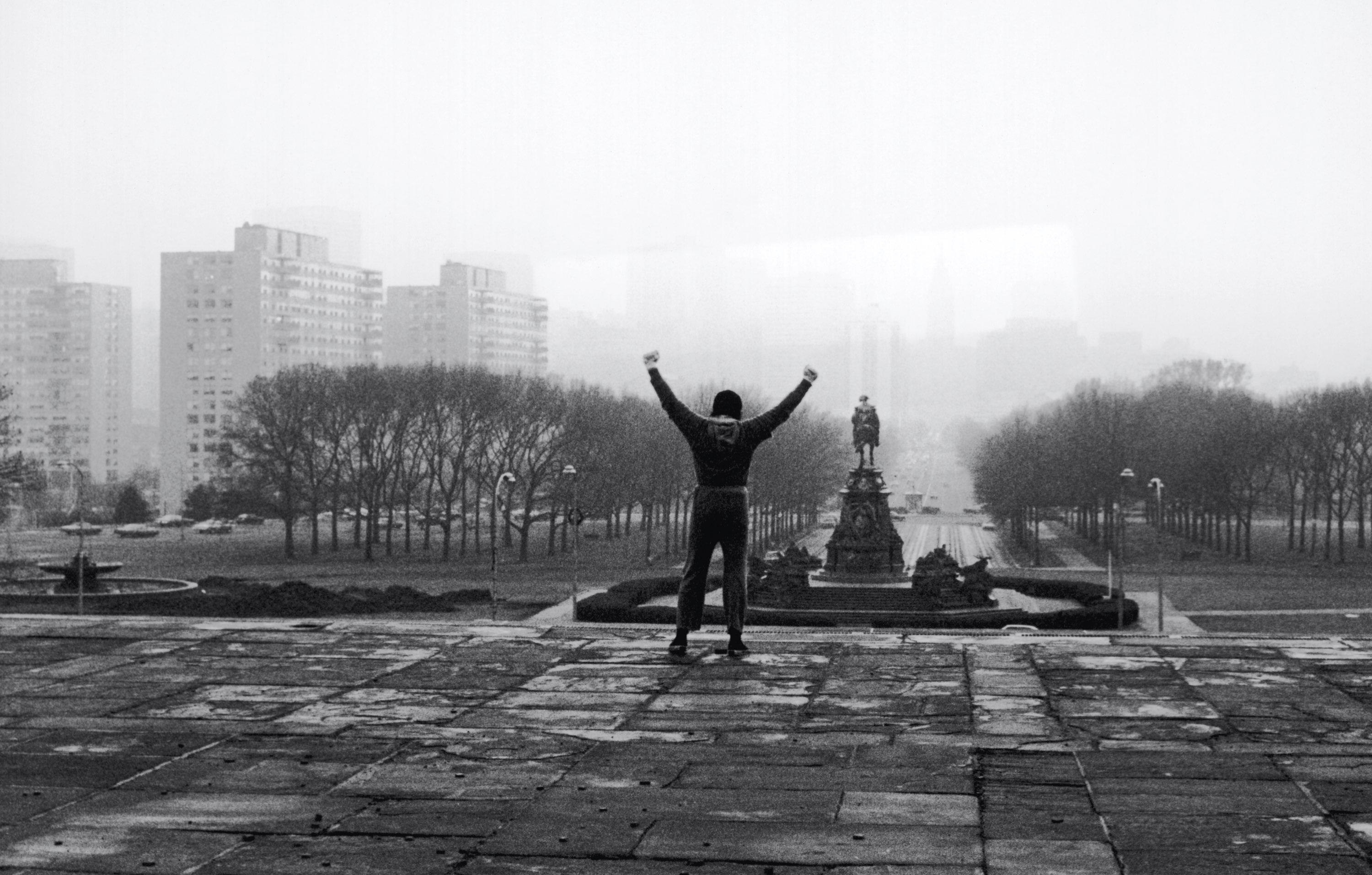
We are thrilled to be supporting the safe reopening of cinemas and to support them in doing so, we are taking a dive into our catalogue for a closer look at what some iconic films mean to all of us, and why.
Throughout September we've been taking a closer look at films that stop us in our intellectual and emotional tracks, as we take a look at the theme of RETHINK in cinema.
In this Close Up, we are taking a seriously deep dive into a legendary film franchise that is returning to to selected international cinemas from Friday 25 September - ROCKY, with historian Paul Duncan.
Paul is the editor of Rocky: The Complete Films, published by TASCHEN, and Jack Dempsey: A Tale of Two Fists by Damon Runyon.
One of the key pieces of advice given to writers wanting to sell scripts/ideas/concepts to the Hollywood studios is that you need to have a character for the audience to identify with so that they can experience the story to the fullest emotional extent. In the 1920s and ’30s, everybody identified with Charlie Chaplin’s Tramp. In the 1940s and ’50s Hollywood looked to Henry Fonda or James Stewart to fulfil those roles. In the 1960s you had Jack Lemmon, and nowadays Tom Hanks invariably plays the everyman character. The “everyman” has a pure soul, and is a force for positivity in the world, but bad things happen to him, and it is only through his effort of will to remain true to himself and his ideals that he will triumph in the end.
With the rebirth of the Hollywood blockbuster in the 1970s, the everyman was personified by farm boy Luke Skywalker, or shy professor Henry “Indiana” Jones, or gruff New York City detective John McClane, but they were all preceded by a down-at-heel boxer named Rocky Balboa, who was written and portrayed by Sylvester Stallone.
As Stallone explained: “What I try to do is to interpret the longings of the everyday proletariat, the blue-collar man.” So it was somewhat appropriate that when Rocky (1976) won three Oscars in 1977, Charlie Chaplin wrote a note to Stallone that said simply, "Rocky reminds me of a little character I used to play…”
Stallone began work on the Rocky character in 1975, not with words, but with paint. Stallone: “Usually I try to visualize something before I put it into words. Words are very difficult and sometimes unforgiving. So if I could see what Rocky looked like, then perhaps I could write about him. So I began to work on this image. But I didn’t want to use a brush because I felt that the character was made out of industrial tools. He was a man that was forged by the hardships of life. So I put this image up there and I started to actually carve it with a screwdriver. Then I took newspaper clippings which would reflect what it would be like to be a very poor, unsuccessful man, especially a boxer, and then, all of sudden, the image came alive. Then I said, ‘OK, this is a character I would like to see written about because he looked interesting visually.’ If he looked interesting visually, then I think that he would translate through to literature and then cinema. I know it sounds ambitious but that was the genesis of Rocky.”
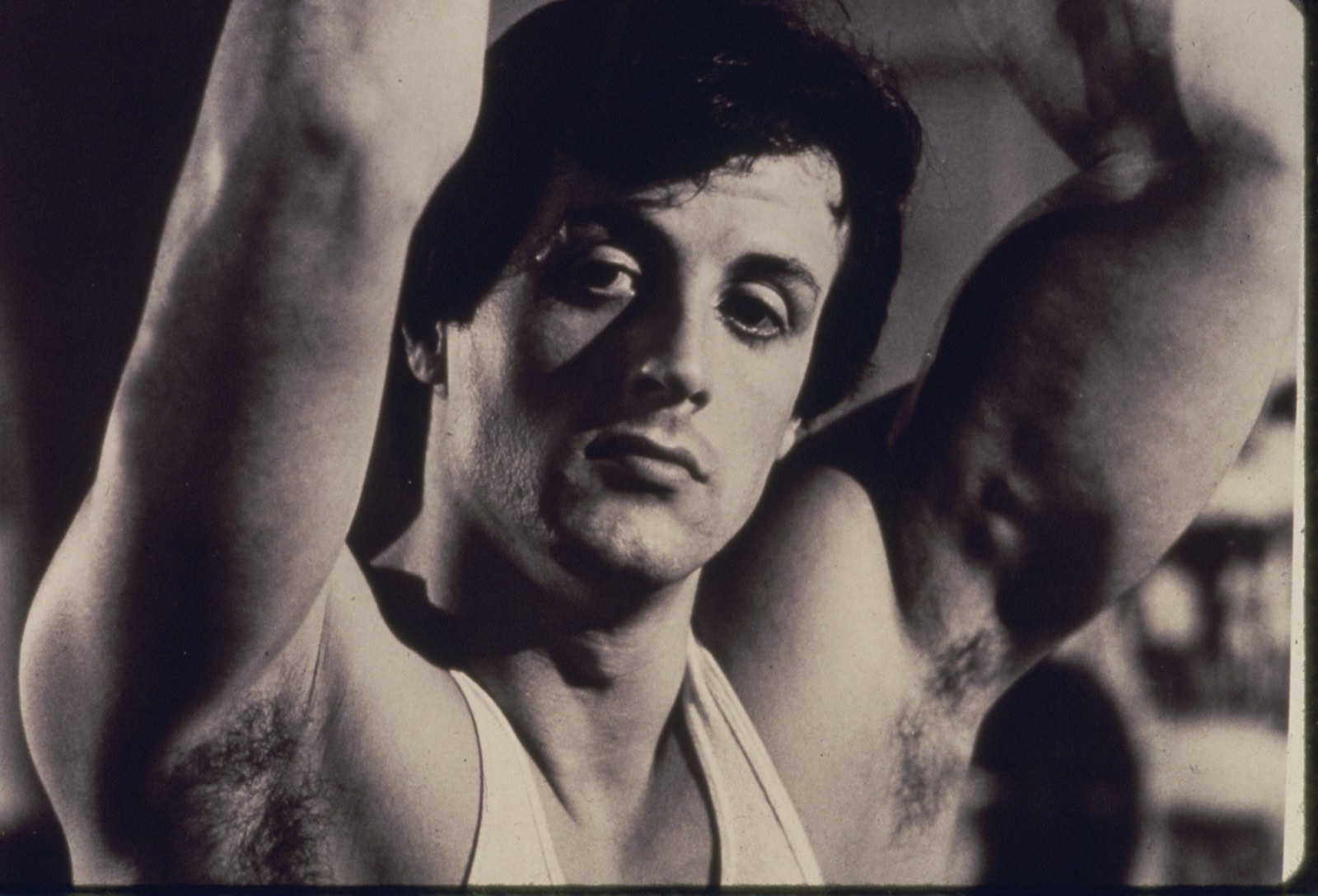
Rocky (1976)
Writing furiously, Stallone delivered a script in three and a half days: “I had a feel for the streets, and I loved films like Mean Streets [1973], and Marty [1955], and On the Waterfront [1954], and I felt inspired.” The movie is centred on the relationship between an unsuccessful boxer and his attempt to woo shy pet shop assistant Adrian (Talia Shire). “It’s a classic coming together of two seemingly insignificant misfits. Literature’s full of the theme, and Marty was a great expression of it for the previous generation. So Rocky updated the scenario for my generation, and Marty always reminded me not to get too eccentric with the story or the characters—keep it simple."
Although the heavyweight title fight with Apollo Creed (Carl Weathers) drives the plot, Rocky Balboa is the emotional heart of the story. From the beginning you see that Rocky is a nurturing character. He has two turtles, Cuff and Link: “The two turtles represent him. Hard on the outside. He wears a leather jacket, gloves, and his hat—it’s like his armour. But inside quite pliable.” He loves Adrian and brings her out of her shell. He is kind to Adrian’s brother Paulie (who is neither kind nor likeable), and he gives his embittered trainer Mickey something to live for and be proud of. So, together with this group of blue-collar misfits, Rocky finds self-respect in the ring when he goes the distance with Apollo Creed.
After Rocky became a commercial and critical success, it was up to Sly to find a way forward. Stallone: “There was a stigma to doing sequels. I didn’t understand why we couldn’t see the continuing metamorphosis and growth. When I was 15, I read the Studs Lonigan trilogy, by James T. Farrell, about this Irish kid in Chicago. I guess he died when he was about 32—he was all screwed up. But I’ve always wanted just one time for the American cinema to round out a character.” Sly has rounded out the character of Rocky over eight movies and 42 years, making him comparable to Jean-Pierre Léaud playing Antoine Doinal in five films written and directed by François Truffaut over 20 years.

Rocky Balboa (2006)
In Rocky II (1979), Rocky gives up fighting, builds a family with Adrian, and tries to live on his fame, but then returns to the ring out of financial necessity. But really, underneath it all, Rocky and Adrian are admitting that Rocky has to remain true to what he is, which is a boxer. As a result, he beats Apollo in the ring.
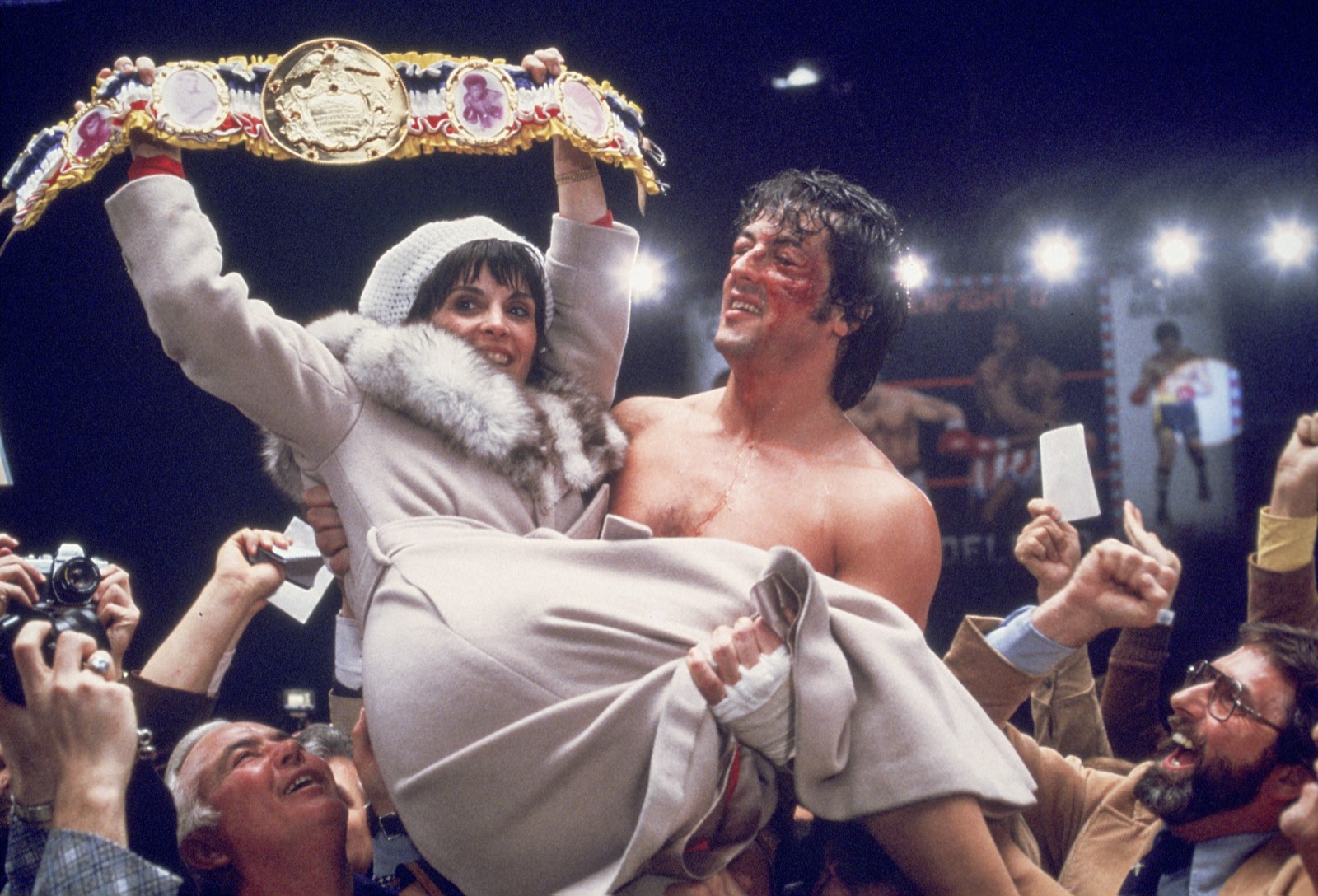
Rocky II (1979)
Rocky III (1982) opens with Rocky as the new world champion, enjoying the trappings of fame and celebrity. It is a job and a way to make money. Stallone: “I wanted to reveal the flip side of the fame game. We’re conditioned to cope with failure, but there are no platitudes for dealing with success. Seven years had passed since Rocky. Panic and fear set in. I used those emotions to get back to the person I was before all the glamour and notoriety. Rocky is a once-in-a-lifetime coming together of self and character. There are certain parallels [between Rocky and me]. Rocky had drive, and intelligence, and the talent to be a fighter, but nobody noticed him. Then when opportunity knocked, everybody said, ‘Hey, there’s Rocky, he’s good.’ That’s what happened to me.”
Rocky has lost something of his inner spirit, which is illustrated by the death of his mentor Mickey. Stallone: “We see the vanity come through. He’s now commercialized. He’s well dressed, and he drives a Maserati. He’s going to get his ass kicked.” When Clubber Lang (played by Mr. T) subsequently defeats Rocky, Rocky fears for his future, and for his life. It is only through the intervention of Apollo Creed as his new mentor that Rocky regains his inner spirit and goes on to defeat Clubber Lang.
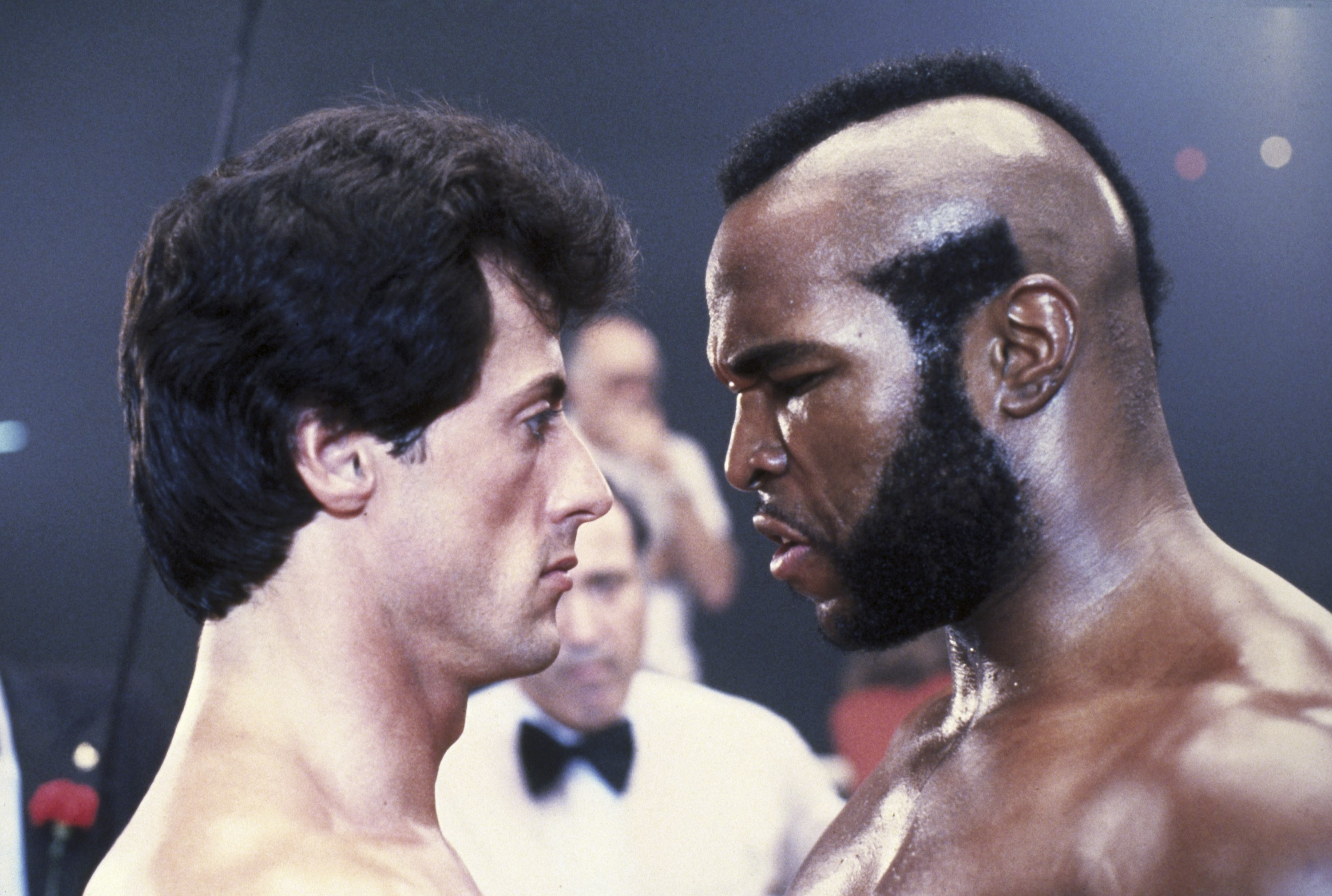
Rocky III (1982)
Rocky IV (1985) drew inspiration from the politically-charged June 22, 1938 fight between American Joe Louis and German Max Schmeling during the Nazi era, but the Rocky vs. Ivan Drago (Dolph Lundgren) fight was set against the Cold War background of East vs. West. The Louis/Schmeling battle ended in the first round, so a more dramatic template was needed. Stallone: “At the Hagler/Hearns [April 15, 1985] fight in Las Vegas I saw them unload on each other. In the first round, I thought Rocky and Drago should hate each other so much that they should just attack each other like pit dogs ... professionalism be damned. So I told Dolph to do this for a little while. Dolph Lundgren is a world-class kickboxer and he can really hit. So what you see in the first 20 seconds is real, and after the third take of taking body blows, I felt a burning in my chest, but ignored it. Later that night I couldn’t breathe very well, and they took me to the emergency room. My blood pressure was 200+, and the next thing I knew I was on a low-altitude flight from Canada to St. John’s Hospital in Santa Monica, and there I resided in intensive care for eight days. What had happened is he struck me so hard in the chest that my heart slammed against my breastbone and began to swell, so the beating became laboured, and without medical attention the heart would’ve continued to swell until it stopped. They said they didn’t see this sort of damage except in head-on truck collisions, when the steering wheel slams into their chest. So in a sense I was hit by ‘a streetcar named Drago.’”
In the ring the film is about the inner belief of the boxers. As soon as Rocky cracks Ivan Drago’s self-belief in his training and modern-age scientific testing, the machine-made-man can be shattered. At the end, Rocky’s speech to the crowd opens up the possibility for people to change, and that there is hope for détente between the countries in the future.
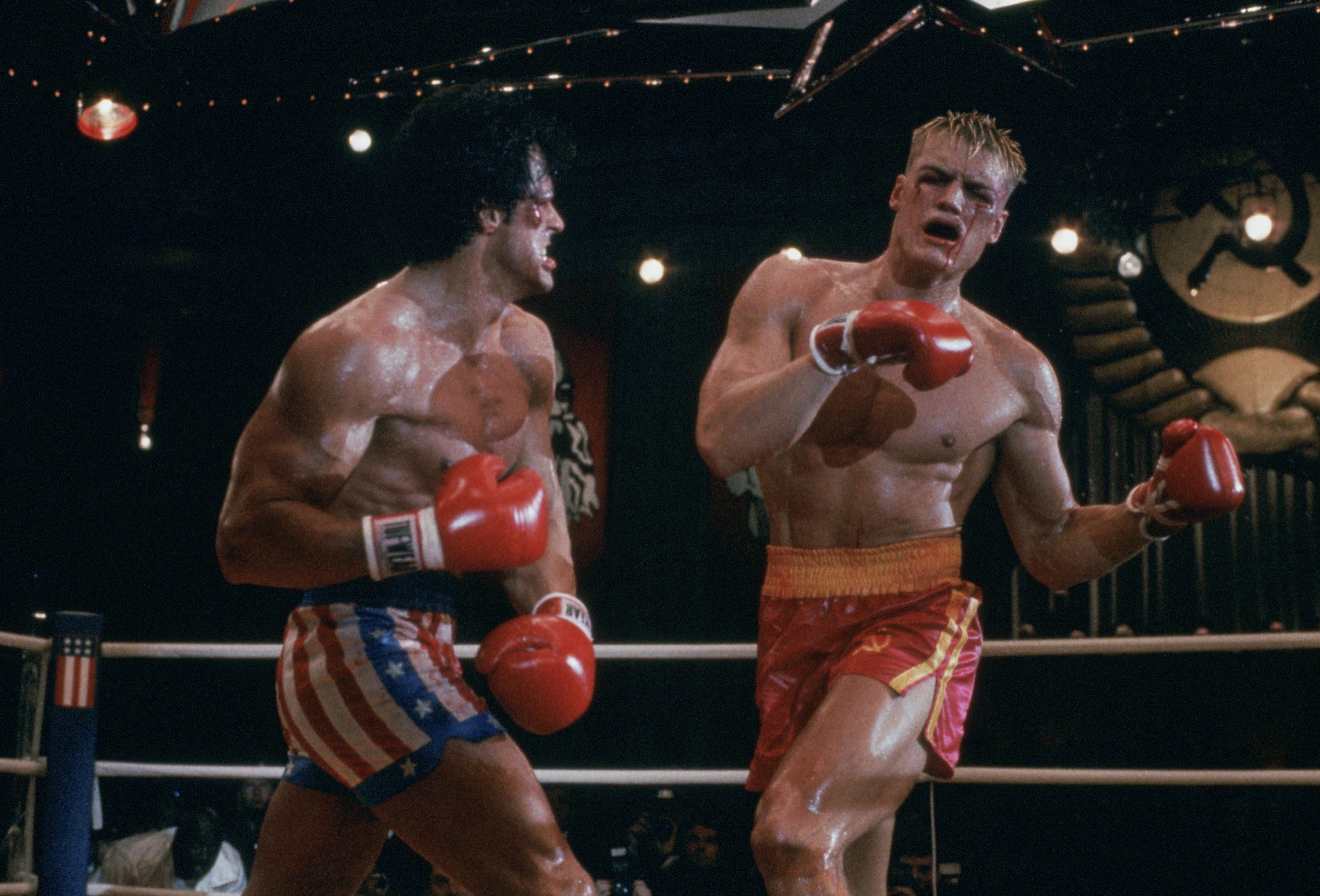
Rocky IV (1985)
After the fame and the success comes the fall. The fight with Drago broke something inside Rocky. That, combined with Rocky going bankrupt, forces the family to return to their roots in Philadelphia. In Rocky V (1990) Rocky tries to relive past glories by training upcoming heavyweight Tommy Gunn, but in the process he ignores his own son, Robert. It is only when Rocky expunges Tommy Gunn from his life—purging his selfish urges—that he can return to supporting his family and friends.
Rocky Balboa (2006) takes place much later, with Rocky as a grieving widower. Adrian has passed away, and Rocky is estranged from his son. The film follows Rocky’s return from grief by, again, bringing together a group of lost people. As Stallone said: “I’ve always thought of Rocky as an individual that was chosen to take a journey that would bring together many ‘broken’ people, including himself, and this group would achieve success because of their newfound self-respect.”
It was a fitting end to the Rocky Saga. Then, surprisingly, Rocky made a comeback (like most boxers and entertainers) in Creed (2015), written and directed by Ryan Coogler, who went on to do likewise for Black Panther (2018). Here, Rocky takes on a mentoring role to Adonis Creed (Michael B. Jordan), Apollo’s illegitimate son. Rocky finds something to live for, and both characters have to come to terms with the past. The 2018 sequel went on to recreate the dynamics of the Rocky vs. Drago fight for a new generation.
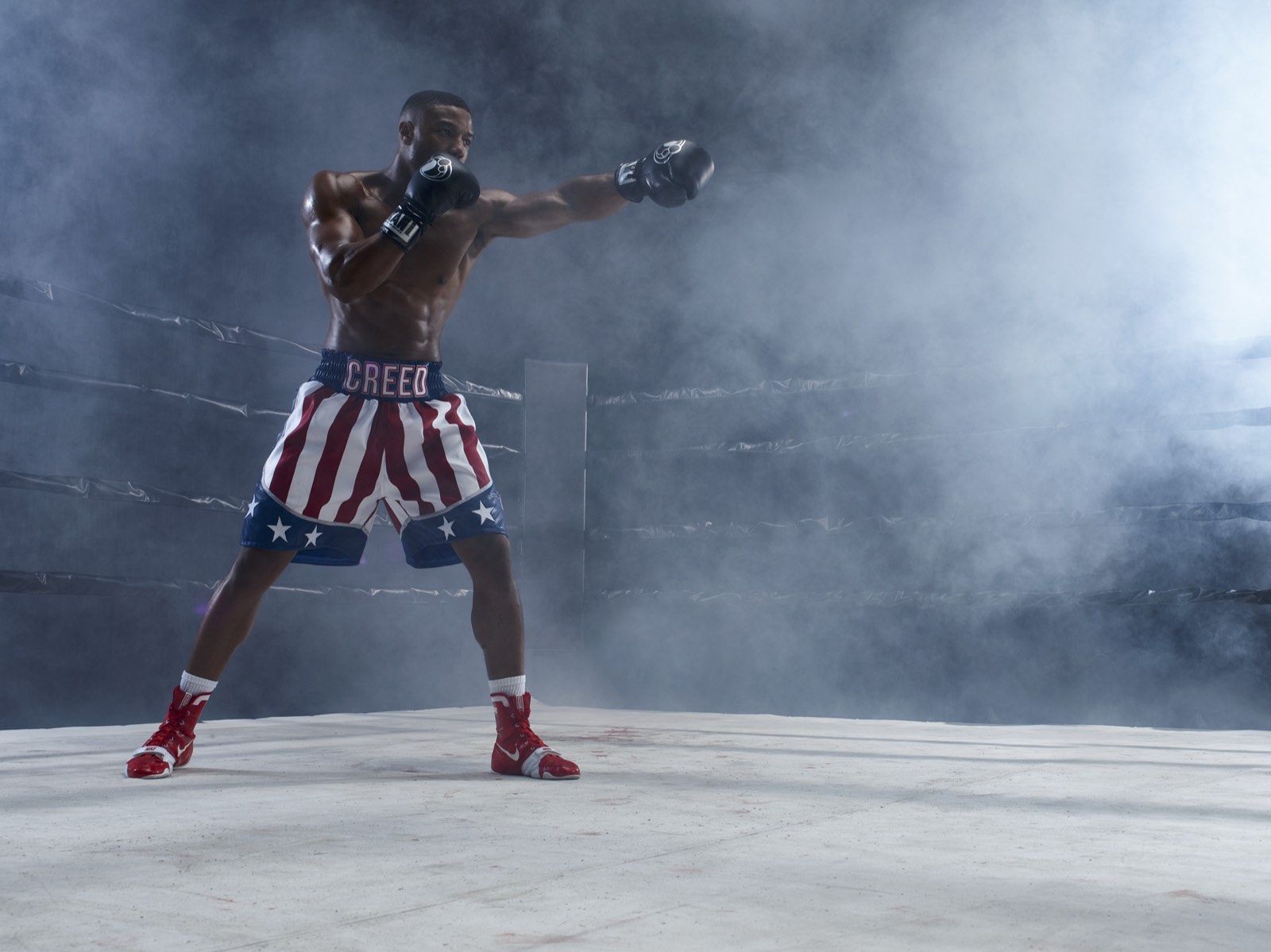
Creed II (2018)
So what is the ultimate appeal of the Rocky saga? I don’t think that it is solely because of the boxing scenes, although that is certainly part of his appeal. I think it’s because the character empowers the viewers. As Rocky says in Rocky Balboa: “Nobody is gonna hit as hard as life. But it ain’t about how hard you hit. It’s about how hard you can get hit and keep moving forward. How much you can take and keep moving forward. That’s how winning is done!”


